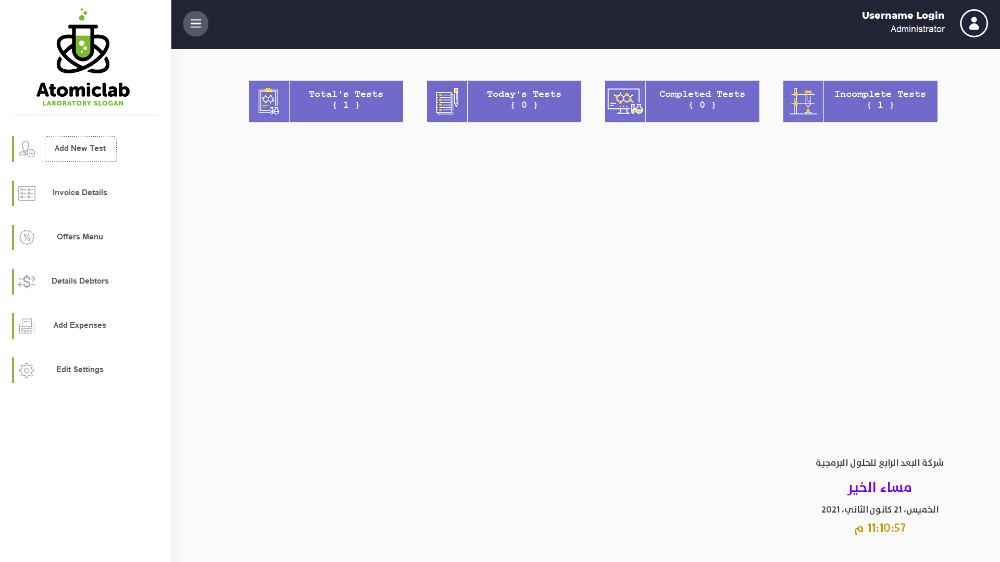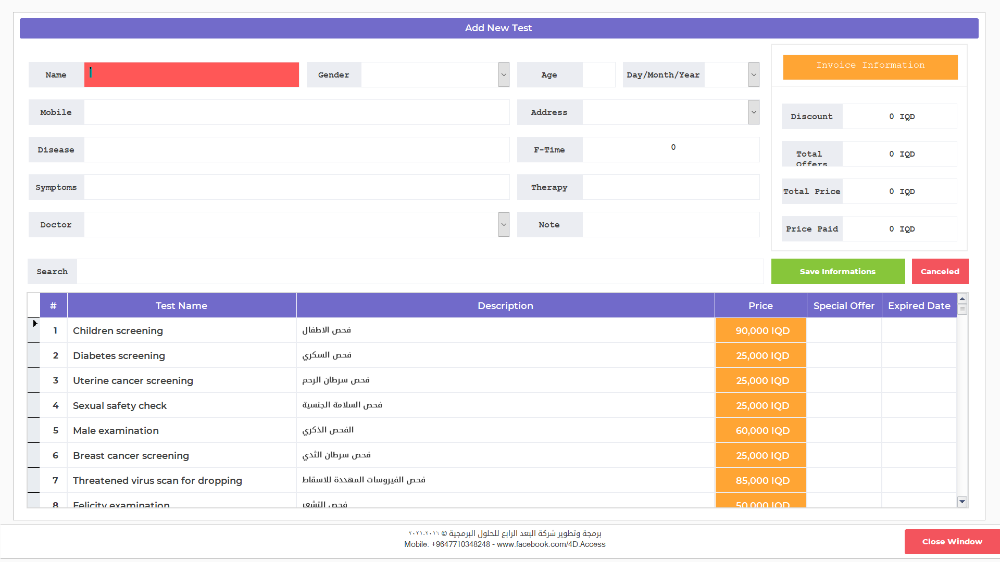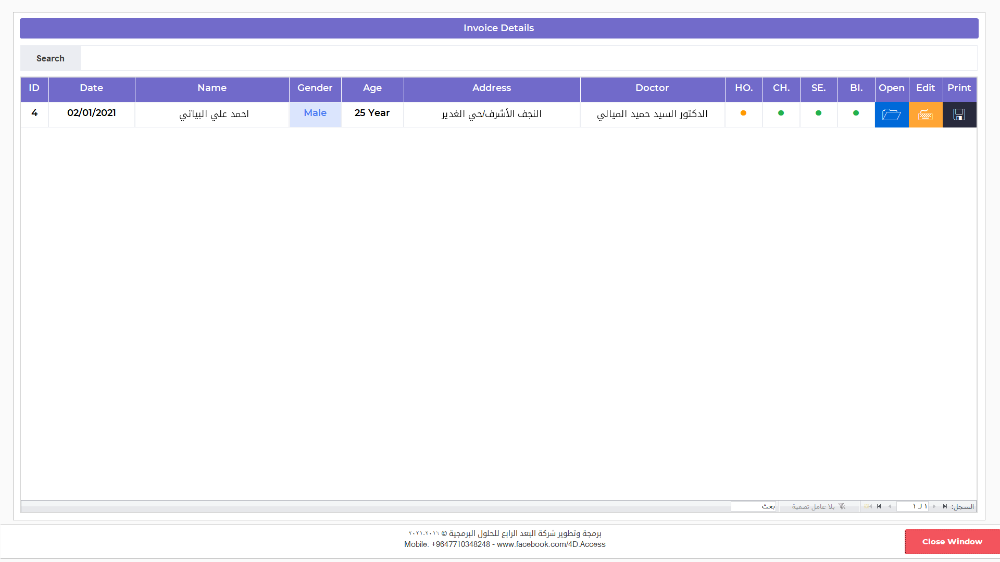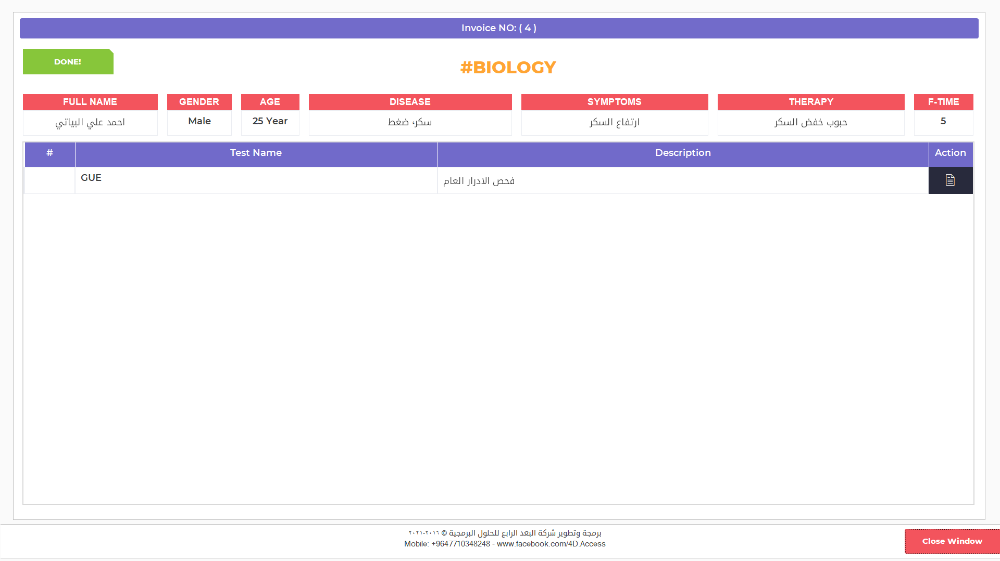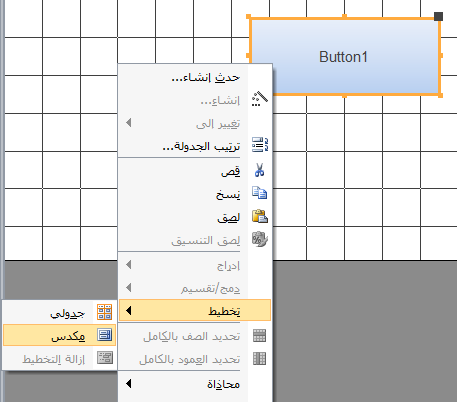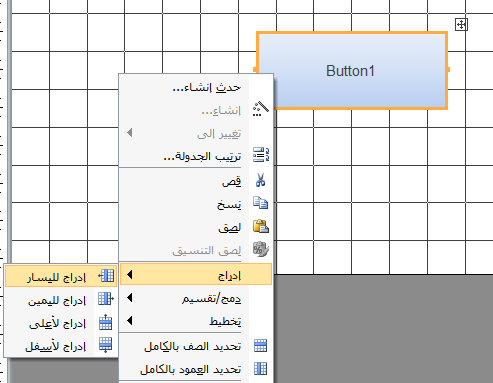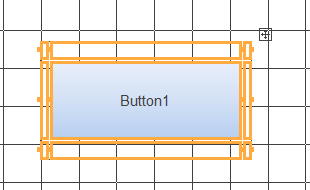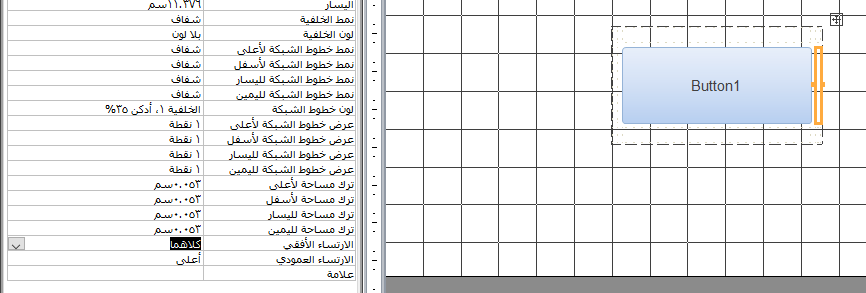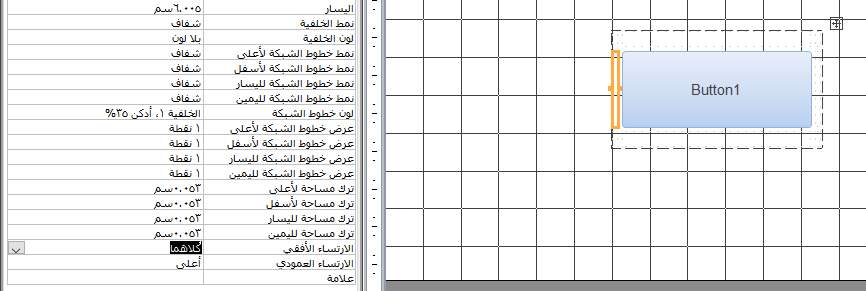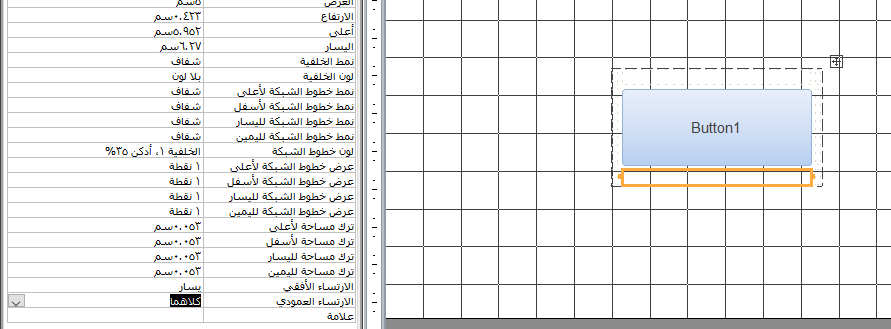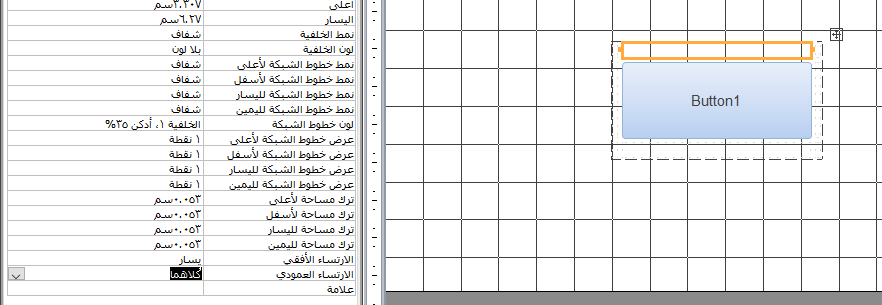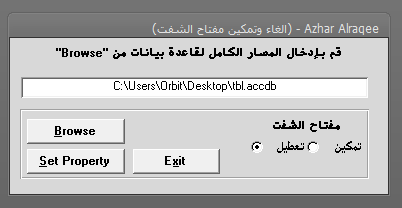بحث مخصص من جوجل فى أوفيسنا

Custom Search
|
-
Posts
540 -
تاريخ الانضمام
-
تاريخ اخر زياره
-
Days Won
11
نوع المحتوي
المنتدى
مكتبة الموقع
معرض الصور
المدونات
الوسائط المتعددة
كل منشورات العضو SEMO.Pa3x
-
عليكم السلام، تفضل: Option Compare Database Private Sub go_Click() 'check if TextBox tn is empty If IsNull(tn) Then MsgBox "يرجى كتابة رقم للبحث عنه", vbCritical, "عملية خاطئة" Exit Sub End If 'check if record exist If DCount("ID", "tbl2", "HNO =" & tn) = 0 Then MsgBox "لم يتم العثور على السجل المطلوب", vbCritical, "عملية خاطئة" Exit Sub End If 'go special record Me.Recordset.FindFirst "HNO=" & tn 'clear TextBox tn after search tn = Null End Sub Private Sub tn_KeyDown(KeyCode As Integer, Shift As Integer) 'Do event when click Enter key. If KeyCode = vbKeyReturn Then Call go_Click End If End Sub لا تنسى اختيار أفضل أجابة لإغلاق الموضوع. تحياتي. انتقال.accdb
-
شاهد رد أحد موظفي شركة مايكروسوفت: Dirk Goldgar Replied on October 6, 2014 No, there is no code you can put into the un-trusted database too automatically make it trusted. If you think about it, being able to do that would completely defeat the security barrier placed on untrusted code. What I would suggest you do is, rather than have your co-workers need to actively trust this particular database, put the database into a shared network folder that everyone's installation of Access is set to trust. That way, any database placed in that folder will automatically be trusted, so no security prompt will be displayed. However, the hitch here is that all users must tell Access to trust that folder. Manually, that would be done by way of the Trust Center settings, and you'd have to give everyone instructions that they'd have to follow -- once -- to trust the folder. If your company has a standard desktop configuration that gets installed on all users' desktops, it would be possible to have the trusted network folder be part of that installation. Alternatively, I believe there may be a utility out there that you can have all your users execute to add a particular folder to the trusted folders list. I'll have a quick look around online now to see if I can find such a thing; you may want to do the same. Dirk Goldgar, MS Access MVP 2001-2015 Access tips: www.datagnostics.com/tips.html
-
عليكم السلام، تفضل. JO_2021.accdb
-

طلب مساعدة لحل مشكلة تصفية بين تاريخين في سجل له تاريخين..!
SEMO.Pa3x replied to Sami777's topic in قسم الأكسيس Access
حسنا، للآن الذي فهمته من ردك الاخير انك تريد أولاً جلب الاجازات النشطة مع التاريخ الحالي، مثلاً: لو كان التاريخ الحالي هو ( 1/2/2021) وكانت الاجازة تبدأ من تاريخ 31/1/2021 الى تاريخ 1/2/2021 فيي الأستعلام الأول سيقوم بأحضارها لانها تقع ضمن مدى التاريخ الحالي، بعدها تريد فرز بعض الاجازات النشطة حسب تاريخ معين جرب الآن ووافني بالنتائج Vacations.accdb -

طلب مساعدة لحل مشكلة تصفية بين تاريخين في سجل له تاريخين..!
SEMO.Pa3x replied to Sami777's topic in قسم الأكسيس Access
أشرح بوضوح وبإختصار ماهو المطلوب؟ -

[درس] جعل برنامجك يتحجم تبعاً لاختلاف الشاشات - responsive design
SEMO.Pa3x replied to SEMO.Pa3x's topic in قسم الأكسيس Access
أهلاً عزيزي، تفضل. example_semo.accdb -

طلب مساعدة لحل مشكلة تصفية بين تاريخين في سجل له تاريخين..!
SEMO.Pa3x replied to Sami777's topic in قسم الأكسيس Access
لم افهم! هل حُلت مُشكلتك؟ ام لا ؟؟ -

طلب مساعدة لحل مشكلة تصفية بين تاريخين في سجل له تاريخين..!
SEMO.Pa3x replied to Sami777's topic in قسم الأكسيس Access
عليكم السلام, هل هذا المطلوب؟ Vacations.accdb -
السلام عليكم، وانا اتصفح النت وجدت مقال باللغة الانكليزية يتحدث عن ارشادات ونصائح لتسريع آلية عمل البرنامج وايضا للتحسين من جودة الكود المصدر: https://www.shamrock-software.eu/vb.htm للمهتم بقراءة المقال: Faster Visual Basic Programs Simple tricks for VB optimization Microsoft Visual Basic is a popular programming language. While many applications at Shamrock were written in C and C++, some were also created in VB. Especially its string concept and string functions make life easier than in other languages and also improve stability: Crashes caused by buffer overflows and null pointer problems, well-known to most C programmers, are quite rare in VB. A few simple tricks make execution speed even faster. They were tested with VB4, VB5 and VB6. Please note that the given CPU times should be read as relative values which greatly depend on the PC speed. Use the dollar symbol for string functions One might expect that Mid$( ) and Mid( ) are the same and the dollar symbol representing the string type is more or less implicit for string manipulating functions. But without the $, VB will return a variant value and has to reconvert it to a string later. Adding the $ is an optimization. It will explicitly enforce a string value to be returned. Running a loop 10 million times on a test PC shows significant timing differences: e$ = mid("ABC", 2) 5.0 s e$ = mid$("ABC", 2) 1.9 s So a dollar symbol should be added behind all functions returning a string to avoid the unnecessary type conversion: Chr ChrB CurDir Dir Format Hex Input InputB LCase Left LeftB Mid MidB Oct Right RightB RTrim Space Str String Trim UCase There are also speed differences between Asc and AscW, and Chr$ and ChrW$. Because the functions with a W (for wide) do not have to convert the VB-internal 16-bit Unicode characters to 8-bit ANSI codes or vice versa, they are a bit faster. While the difference between Chr and ChrW is marginal, AscW is nearly two times as fast as Asc. But take care: AscW may return values above 255, depending on the character set used, and this is not always easy to handle. Assigning and testing empty strings A loop assigning an empty string to a string variable 10 million times gives surprising results, too. While absolute times may again differ on your system, the improvement when using vbNullString is significant: e$ = "" 1.51 s e$ = vbNullString 0.38 s Note that the predefined constant vbNullString is not exactly the same as an empty string, but it can be used as an equivalent and even returns true when comparing vbNullString = "" (while vbNullString is a null pointer, "" results in a pointer to a string with zero length; however, not all API/DLL functions handle them identically, so be careful). Checking if a string is empty 10 million times can also be done in different ways. Here are the times for doing it 10 million times on our test system: If "ABC" = "" 0.73 s If "ABC" = vbNullString 0.58 s If Len("ABC") = 0 0.46 s If LenB("ABC") = 0 0.39 s So the speed nearly doubles if you are using LenB instead of comparing the string with an empty string. Note that you should not replace Len by LenB in general, since LenB returns the byte count in the VB double-byte strings instead of the character count. But for simply checking if the length is zero, LenB is the fastest method. Checking character codes To check if the first character of a string matches a specified code, AscW is more than two times faster than using a conventional string comparison: If "A" = "A" 1.17 s if Asc("A") = 65 1.01 s If AscW("A") = 65 0.52 s Visual Basic always uses Unicode strings internally, so AscW does not need to convert 16-bit Unicode values to 8-bit ANSI values like Asc. Note, however, that AscW (and also Asc) will cause a runtime error if the given string is empty, so take care. Furthermore, AscW returns Unicode values instead of ANSI codes, but this does not make a difference for ASCII codes from 0 to 127. For national symbols, the result depends on the system's default character code. String to number conversion When you convert a string to a numeric variable, the most common function is Val( ). But if the numeric variable is an integer or a long integer, why waste time for floating-point calculations? Converting the string to the desired variable is much faster. The following example shows the required time for converting a string "1234567" to a long integer 10 million times: i& = Val(e$) 24.2 s i& = CLng(e$) 6.5 s However, unfortunately, the behaviour of CLng (32 bit) and CInt (16 bit) is a bit different compared to Val: If the parameter is an empty string, a runtime error occurs, while Val would simply return zero. If the string is hex or octal and contains a dot or a comma (e.g. "&H1.2"), a runtime error occurs. Commas and dots are interpreted depending on national settings, e.g. "1.234" will give 1234 on an Austrian or German PC, since dots are used for grouping thousands, while a comma is used for decimals. What's better, Visual Basic or C? Good question, just like "what's better, apples or oranges". If a program must never crash due to unexpected string lengths or similar causes, VB is a good choice, but do not forget to handle all possible runtime errors properly. If speed is more important, assembler is best, immediately followed by C. So Val might still be the better choice if either the speed is not critical or if it cannot be guaranteed that the string is not strictly numerical. Be careful, though - even Val is not absolutely robust: Things like Val("1@e") will generate a run-time error. So do not use either it if you do not really expect a numerical string! Multiple conditions in one line In contrary to many other languages, Visual Basic (just as the QuickBasic compiler and the GwBasic interpreter in the old DOS days) executes all conditions in an IF statement, whether this makes sense or not. For instance, C, Javascript or Perl never call the Function check(2 ) in this sample if check(1) returns 0=false: if (check(1) && check(2)) But Visual Basic always checks both, which is not really optimal since it wastes time. Here is a workaround. Instead of using if check(1) and check(2) ... execution will be much faster if you write: if check(1) then if check(2) ... Of course this is not really critical for comparing simple variables, but calling functions unnecessarily increases the CPU time. It is also useful to think about which of the conditions will be more often false than the other one(s) and put it at the beginning -- but this is a good idea for all programming languages, of course. Similarly, in most programming languages a second condition after a logical OR ("||" in C, Javascript or Perl) is not executed if the first condition is already true. Visual Basic is different again. A demonstration example: If True Or MsgBox("Test") then j=1 This will show a message box, even though the execution of MsgBox is totally obsolete. It will save execution time if you change the program flow so that no OR-combined statements occur. True is non-zero Nearly all programs contain tests for non-zero or greater-than-zero values, like: If Instr(x$, ",") > 0 Then ... Note that Instr never returns negative values, so <>0 is just as good as >0. Knowing this, the line can be abbreviated to: If Instr(x$, ",") Then ... since a condition is always treated as True if the result is non-zero. However, be careful when using Not: If Not Instr(x$, ",") Then ... This would not work since Not negates all bits and thus only works correctly with -1 (True, all bits set) and 0 (False, all bits reset) as Boolean values! Instead, If Instr(x$, ",") = 0 Then ... must be used. Imagine you are writing a function which returns true if string a is greater than string b. A beginner would write: Private Function Comp(a$, b$) as Boolean If a$ > b$ Then Comp = True Else Comp = False End Function Now, first of all, "Else Comp = False" is obsolete since all variables and the return value is initialized to 0, False, or empty when a function is entered. But even more tricky, the following function is equivalent to the above and faster: Private Function Comp(a$, b$) as Boolean Comp = a$ > b$ End Function Declaring Long as the default variable type The module-level code of each form and module should always contain at least these two statements at the very beginning: Option Explicit DefLng A-Z Option Explicit makes sure that you will have to declare all variables explicitly which significantly enhances code quality. DefLng A-Z defines all variables with no explicit type declaration as 32-bit long integers (called dwords in C) which is the native data type in all modern CPUs. If you forget this, your variables will be variants, resulting in a much slower program execution and more memory consumption. It is also not recommended to use 16-bit integers instead - though they are shorter, execution will be slower than with native 32-bit types. In general, avoid the Variant data type which is much slower than any other. Copying small things to large strings If you have to add some small strings to a long string many times, this can get extremely slow. The reason is that Visual Basic makes a copy of the large destination string each time when something is added to it. A sample which takes about 12 seconds on a test PC: For i = 0 to 10000 a$ = a$ & "This " & "is a test" Next Something like a$ = a$ & b$ gets extremely slow when a$ gets large. A small "cache" string can speed up things significantly. The following version runs in less than 0.1 s -- more than 100 times faster though the result is still 140014 characters long! For i = 0 to 10000 c$ = c$ & "This " & "is a test" If Len(c$) > 3000 then a$ = a$ & c$: c$ = vbNullString Next If LenB(c$) Then a$ = a$ & c$ 'Add rest if any The trick is that c$ is used for chunks of data which can be copied relatively fast. Only when the chunk in c$ gets big enough it is then added to the result in a$. Making VB 4+5 applications work in Windows 7 and Vista When you try to launch a Visual Basic 4.0 or 5.0 program in Windows 7 or Vista for the very first time and UAC (user access control) is enabled, which is the default, it displays a message "Error accessing the system registry" and will not work. The cause is that the VB runtime DLL attempts to write values in a registry path which is not accessible for users and normal applications. There are two ways to circumvent this, and later program starts will then work without any problem: Right-click the Visual Basic program und select "Run as administrator" when launching it for the first time. - Or: Rename the program to Setup.exe or Install.exe. In this case you will be prompted if you agree to start it. An alternative is to call the application from another program named Setup.exe using the Windows API function ShellExecute( ) or the Shell command in VB. If the program needs to register an OCX module, this will require one of the above methods even if another Visual Basic program was running before: Normal users or programs are not allowed to register such modules. Also keep in mind that only Setup programs are allowed to copy OCX files into the System32 folder. The problems described above do not exist with VB 6 because Microsoft has included an adapted version of the VB 6 runtime library in Windows 7 and Vista which is installed automatically to avoid compatibility problems. This also fixes problems with data execution prevention (DEP) supported by newer CPUs, though this option is disabled by default for applications. Programs written in VB 4+5 are incompatible with CPU-supported DEP and will crash immediately (or not even start) if it is enabled. More tricks Forms and controls Set the ClipControls property in forms, frames and picture boxes to false if you do not use graphic methods. Set the AutoRedraw property in forms to false if you do not really need it (see VB help for details). If you need to access a property of an object more than once (e.g. Text1.Text), cache it in a variable. While setting many properties in a control, e.g. a list box, hide it until you are ready to avoid repainting. Avoid references to another form, they would load the hidden form into memory even when it is not needed. Before compiling, move all forms to a default position (top left) where they are visible on smaller screens, too. Functions, variables, constants Remove functions and sub procedures which are never called in your program; they would be compiled, too. Use predefined VB string constants like vbBack, vbCr, vbLf, vbCrLf, vbNullChar, vbTab instead of Chr$( ). Use your own constants for values and strings if they occur more than once in the program. Replace local Static variables in functions and procedures by module-level global variables, they are faster. Do not use strings for saving binary data if the program might be used in countries like Japan with multi-byte characters. ASCII values like 130 would be encoded into multiple bytes. Use byte arrays instead. Other recommendations When using Elseif or Case, check the most quickly evaluable or the most frequent conditions first. StrComp(a$,b$,1) is faster than testing LCase$(a$)=LCase$(b$). Both handle national characters correctly. Try to avoid the DateDiff function in loops, it is slow. For comparing two dates, simply use =, <, >. Use Get instead of Input$( ) to read data from a binary file, it is much faster. When using On Error Goto, do not forget to close all local file handles before exiting the sub or function. On Chinese/Japanese/Korean (CJK) computers, ANSI codes >127 in text files are interpreted as double-byte characters. Don't use LSet or the Windows function RtlMoveMemory to copy one user-defined type into another with a different structure even if they seem to have the same length; LenB will show you that VB uses fill bytes between the elements. © 1/2010 Shamrock Software GmbH
-

[درس] جعل برنامجك يتحجم تبعاً لاختلاف الشاشات - responsive design
SEMO.Pa3x replied to SEMO.Pa3x's topic in قسم الأكسيس Access
ممكن توضيح لهذه النقطة: ( لكن ماذا عن حجم النموذج نفسه ان لم يكن في وضع مليء الشاشة..هل هنالك طريقة تجعله يناسب حجم الشاشة بدون أكواد برمجية؟ ) -
السلام عليكم ورحمة الله وبركاته.. الكثير يجهل امكانية الأكسس في جعل البرامج بشكل responsive أي انه: لو كانت لديك شاشة كبيرة سيتغير شكل برنامجك وتوزيع الأزرار والعناصر لتتناسب مع حجم الشاشة ولو كانت الشاشة صغيرة ايضا ستتغير اماكن العناصر لكي تتناسب مع طبيعة الشاشة وعدم فقدان أي عنصر او ضياعه عندك تغيير الشاشات. قبل البدء، سأقدم لكم مثال على ما اقصده: هذا اخر مشاريعي في الأكسس وهو يتغير تبعاً لأختلاف الشاشات. لنبدأ: سأقوم بوضع Button في منتصف الشاشة بحيث لا يتغير مكانه لو تغير حجم الشاشة ثم قم بعملية الأدراج من جميع الأماكن ( يسار, يمين, أعلى , أسفل ) بحيث يصبح كالأتي: ثم من الطرف اليمين، نختار الأرتساء الأفقي ( كلاهما ) وكذلك الحال بالنسبة لليسار كذلك الحال نطبق على الأعلى والأسفل لكن هذه المرة سوف نعدل الأرتساء العمودي وكذلك بالنسبة للأعلى جرب الآن وسوف ترى ان الـ Button سيبقى في الوسط مهما تغير حجم الشاشة لو وضعت شاشة كبيرة أو صغيرة سيظل بنفس مكانه في الوسط. أي سؤال أنا موجود، تحياتي لكم.
-
تفضل book.accdb
-
حسب ما اذكر يمكن اصطياد الباسورد بالهيكس ولكن طريقة غير مجدية لانك ستجد امامك الآف البايتات 😂 ولا تعرف ايهم هو الباسورد، مثال:
-
نعم هذا ما اقصده، mde/accde اما بخصوص ( توجد طرق وبرامج ) كلها تعتمد على تخمين الباسورد، يعني لستة باسوردات ويقوم بتجربتها ممكن تصيب وممكن لا.
-
ارفق لي ملف الاكسل
-
عليكم السلام، قم بترتيبها بالاكسل أولاً ثم قم بنقلها الى الأكسس.
-
قمت بتعديل قاعدة بياناتك وارفقتها لك مرة اخرى.
-
تفضل: Private Sub Form_BeforeUpdate(Cancel As Integer) If DCount("الرقم", "Données _sur- les- élèves", "[الاسم] = '" & الاسم & "' And [اللقب] = '" & اللقب & "' And [رقم التسجيل] ='" & رقم التسجيل & "'") > 0 Then Cancel = True MsgBox "هذا الشخص موجود", vbCritical, "عملية خاطئة" End If End Sub الشهادة المدرسية للقدامى.accdb
-
-

كود حذف الأسطر الفارغة والمسافات في أول السطر
SEMO.Pa3x replied to nssj's topic in قسم الأكسيس Access
حيا الله اصلك يامعلم، بصراحة لم اجد الوقت لتجربة الكود بشكل موسع، كتبته على عجلة من أمري -

كود حذف الأسطر الفارغة والمسافات في أول السطر
SEMO.Pa3x replied to nssj's topic in قسم الأكسيس Access
عليكم السلام، تفضل: Dim RegExp As Object Set RegExp = CreateObject("VBScript.RegExp") With RegExp .MultiLine = True .Global = True .Pattern = "(\r\n)+" resultString = .Replace(nass, vbCrLf) nass = resultString End With SplitCatcher = Split(nass, vbCrLf) For Counter = 0 To UBound(SplitCatcher) If Right(SplitCatcher(Counter), 1) = " " Then SplitCatcher(Counter) = Right(SplitCatcher(Counter), 1) End If Next -

تسجيل مكتبات *.Dll مرفق خارجي او من خلال الاكسس
SEMO.Pa3x replied to Elsayed Bn Gemy's topic in قسم الأكسيس Access
عذراً اخي، الصور صغيرة جدا ممكن ترفعها على مركز رفع وليكن مثلاً www.imgur.com -

تسجيل مكتبات *.Dll مرفق خارجي او من خلال الاكسس
SEMO.Pa3x replied to Elsayed Bn Gemy's topic in قسم الأكسيس Access
أين تقصد؟ اين تقصد ؟ -

تسجيل مكتبات *.Dll مرفق خارجي او من خلال الاكسس
SEMO.Pa3x replied to Elsayed Bn Gemy's topic in قسم الأكسيس Access
قمت بكتابة Class Library بلغة VB.NET Public Class KillProcessLib Public Shared Function kProcess(ByVal prcName As String) Dim prc() As Process = System.Diagnostics.Process.GetProcessesByName(prcName) For Each xKill In prc xKill.Kill() Next End Function End Class الان كيف سأقوم بإستدعاءه في الاكسس؟ يظهرلي ملف امتداداه .InstallLog لما استدعيه من الريفرينس يرفض -

تسجيل مكتبات *.Dll مرفق خارجي او من خلال الاكسس
SEMO.Pa3x replied to Elsayed Bn Gemy's topic in قسم الأكسيس Access
عليكم السلام، بارك الله بك.. سؤال 1: هل تقصد المكتبات المبرمجة بلغة اخرى يقبلها الاكسس؟ سؤال 2: هل يقبل المكتبات المبرمجة بلغة VB.NET ؟




